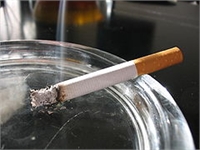
The Dangers of Secondhand Smoke
Important Notice: Our web hosting provider recently started charging us for additional visits, which was unexpected. In response, we're seeking donations. Depending on the situation, we may explore different monetization options for our Community and Expert Contributors. It's crucial to provide more returns for their expertise and offer more Expert Validated Answers or AI Validated Answers. Learn more about our hosting issue here.

The Dangers of Secondhand Smoke
You must be logged in to post a comment.
Smoking affects both the smoker and the people around the smoker. Exposure to cigarette smoke in public places is known as secondhand smoke. The effects of secondhand smoke on second parties are just as serious as the effects of smoking on the individual who is directly smoking the cigarette. This is the main reason why cigarette smoking in public places should be banned.
Heart Disease
The Center for Disease Control and Prevention (CDC) reports that smoking-related health problems are responsible for more than 443,000 deaths or one in every five deaths in the United States annually. Secondhand smoke is a combination of the smoke breathed out by smokers and the smoke from the burning end of a cigarette. Secondhand smoke contains over 7000 chemicals, most of which are toxic and about 70 of them cause cancer. According to CDC, secondhand smoke is responsible for an estimated 46,000 premature deaths among non-smokers from heart disease annually. The report also shows that non-smokers who are exposed to secondhand smoke in public places or at home have a 25 to 30 percent increased risk of developing heart disease. This is because even a brief exposure to secondhand smoke can damage the lining of blood vessels and interfere with the normal functioning of the heart, as such increasing the risk of having a heart attack.
Secondhand Smoke and Children
Secondhand smoke can cause coughing and wheezing in children who breathe the smoke in. Children who are often exposed to secondhand smoke have an increased risk of developing bronchitis and pneumonia, and their lungs also grow less than that of children who do not breathe secondhand smoke.
Lung Cancer
Secondhand smoke increases the risk of developing lung cancer by 20 to 30 percent. The CDC states that secondhand smoke is responsible for an estimated 3,400 lung cancer deaths among non-smokers in the United States annually. This risk increases with the duration of the exposure to secondhand smoke. The more people are exposed to secondhand smoke, the more likely they are to develop lung cancer.
Inconvenience
Apart from the health consequences of involuntary exposure to secondhand smoke in public places, it is very inconvenient for those who do not wish to inhale secondhand smoke. This is especially true for those who have chronic conditions like bronchitis and asthma or for those who have little children they wish to protect from the harmful effects of secondhand smoke. Being forced to inhale the secondhand smoke drifting from the ends of a cigarette can also be annoying for those who wish to live a healthy lifestyle.